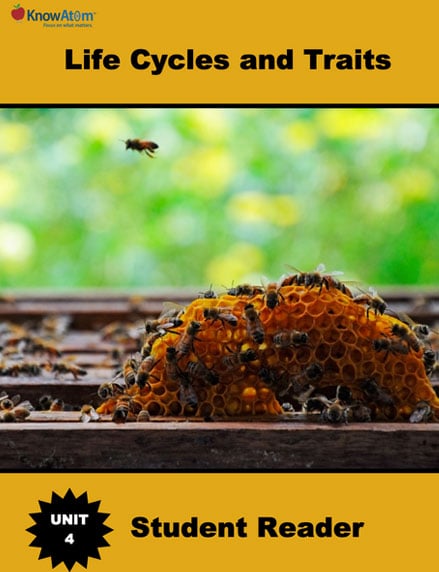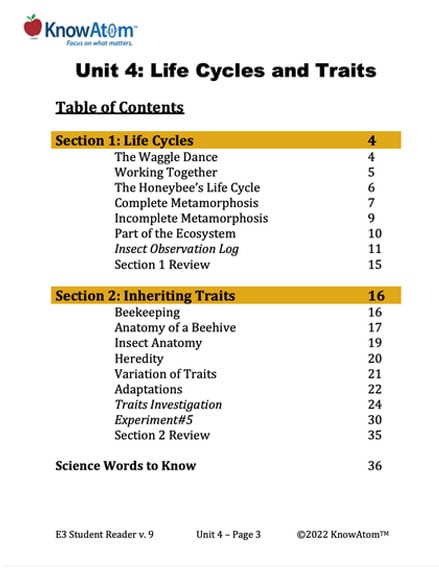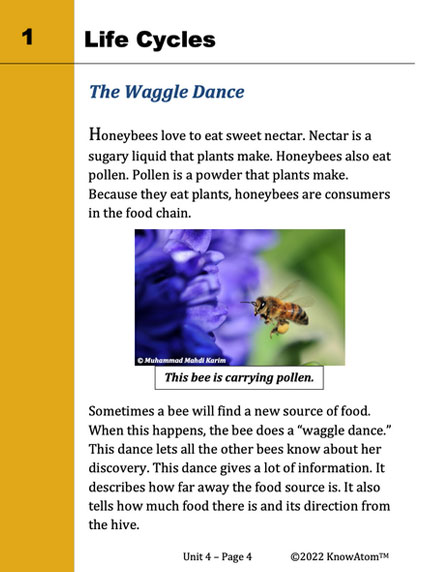The science background provides teachers with more detailed information about the phenomena being studied in this unit. Below is an excerpt from the background information on animal life cycles.
Scientists believe insects are so successful because they produce many offspring in a short amount of time. For example, every beehive has one queen, and her most important job is to mate with the male drones and to lay eggs. She lays up to 2,000 eggs per day. The queen is the only bee capable of reproduction—the ability of a mature organism to have offspring.
Reproduction is a primary goal of all organisms because without reproduction, a group of organisms would die out. Because of this, reproduction is an essential step in the life cycles of all living things. A life cycle is the series of developmental stages an organism passes through on its way from birth to death. All organisms have a life cycle, and although life cycles differ depending on the organism, the changes all living things go through as they grow and develop form a pattern because all life cycles include birth, growth, reproduction, and death. To change means to make something different from what it is now.
Bees and other insects have a life cycle that is called metamorphosis, which is characterized by a change from an immature form to an adult form. The honeybee life cycle begins when the queen lays her eggs.
When the eggs hatch, they are larvae—the young form of an adult insect. Worker bees in charge of raising the young larvae mix pollen with nectar to make “bee bread” and feed it to the larvae. Larvae need food rich in protein to survive. If the larvae eat and grow enough, they will enter a pupa stage. The pupa is an inactive form of an insect dedicated to growth. Insects in the pupa stage are usually immobile and defenseless. Some insects conceal their pupae or cover them with a toxin to deter predators. After the pupa stage, the insect will transform into an adult.
Nine families of insects undergo complete metamorphosis, including bees, flies, beetles, butterflies, and moths. All insects that have complete metamorphosis go through the same four steps: egg, larva, pupa, and adult. For example, mealworms are a common sight in barns, flour mills, and kitchen cabinets. Mealworms are actually larvae of the darkling beetle. They come from eggs that resemble tiny white dots that are hard for predators to find.
Mealworms spend most of their time eating. They need to store up food because once they turn into a pupa, they will not move or eat. All of the insect’s energy is used to change its body from a mealworm into an adult. The mealworm spends one to three weeks in a pupa form.
When the pupa cracks open and the beetle emerges, it is a whitish color like its pupa. The transformation into an adult is complete when the beetle turns reddish-brown and then black. Female darkling beetles then lay eggs, starting the life cycle over again.





.png?width=324&height=374&name=Screenshot%20(17).png)


